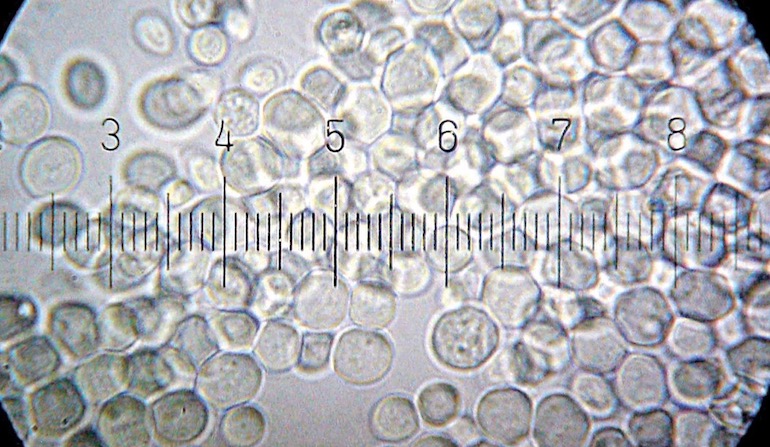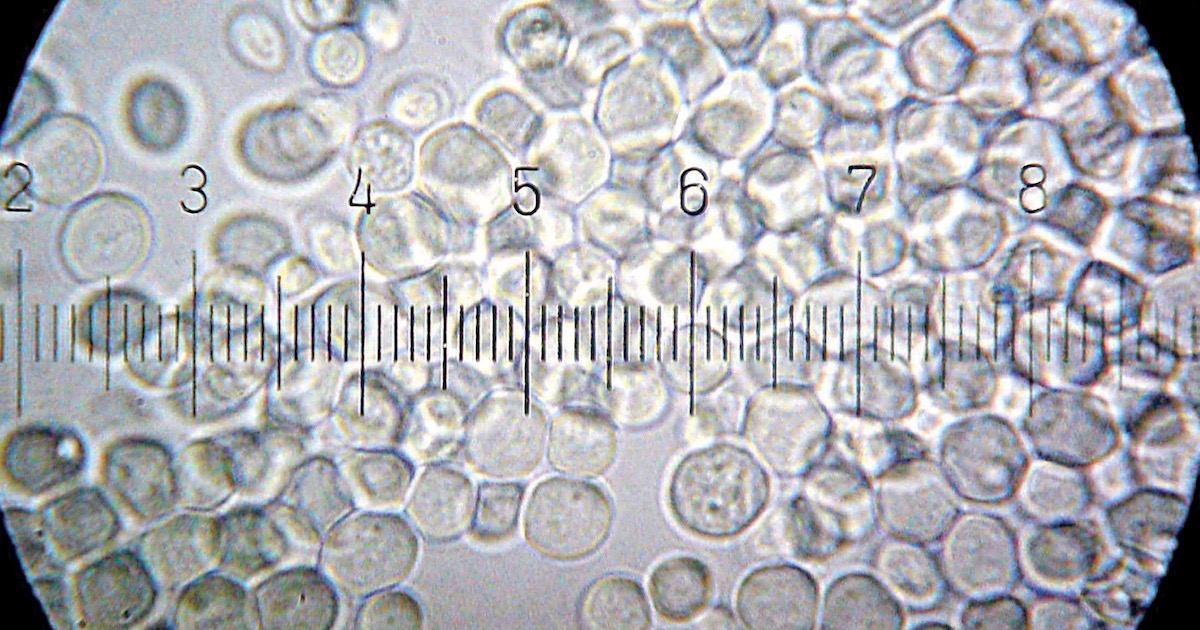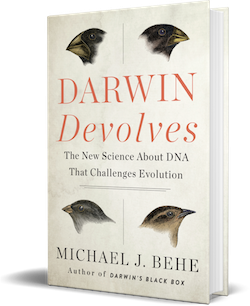 Evolution
Evolution
 Life Sciences
Life Sciences
Helpful Devolutionary Mutations Are Rapid and Unavoidable: Paper Reinforces Darwin Devolves


An interesting paper that strongly reinforces the lessons of Darwin Devolves was recently published in Nature Ecology and Evolution.1 University of Michigan biologists Piaopiao Chen and Jianzhi Zhang looked at the effect of changing environments on the evolution of laboratory yeast Saccharomyces cerevisiae.
 They grew 12 replicate cultures of a pure yeast strain separately for 1,120 generations in each of five disparate, challenging environments: 1) in the presence of the carcinogenic dye Congo Red; 2) in the presence of copper ion; 3) at pH 8; 4) in the presence of hydrogen peroxide; and 5) in the presence of the antibiotic neomycin. They also grew replicate cultures successively for 224 generations apiece in the five conditions — that is, the first 224 generations in condition 1, the next 224 in condition 2, and so on, for a total of 1,120 generations.
They grew 12 replicate cultures of a pure yeast strain separately for 1,120 generations in each of five disparate, challenging environments: 1) in the presence of the carcinogenic dye Congo Red; 2) in the presence of copper ion; 3) at pH 8; 4) in the presence of hydrogen peroxide; and 5) in the presence of the antibiotic neomycin. They also grew replicate cultures successively for 224 generations apiece in the five conditions — that is, the first 224 generations in condition 1, the next 224 in condition 2, and so on, for a total of 1,120 generations.
Chen and Zhang were interested in determining whether adaptive mutations might be lost when conditions were changed, because lab evolution experiments seem to show a lot more adaptive mutations than are seen in the wild. Sure enough, the authors saw that some helpful mutations that arose and were being selected in condition 1 were lost when the yeast was switched to condition 2, and different helpful mutations were gained. Then some of those were lost in condition 3 while others were gained, and so on. At the end of 1,120 generations, the yeast culture that had been rotated through the five environments had significantly fewer net mutations than the sum of all those that had come and gone during the course of the experiment. Chen and Zhang concluded that beneficial mutations can be undercounted in changing environments, both in the lab and in nature.
Fine and Interesting Work
The most interesting point of their fine work to me is that all of the beneficial mutations almost certainly are loss- or degradation-of-function. That is, the mutations in the various conditions benefit the yeast by destroying pre-existing genes or diminishing their activity. Chen and Zhang followed two different categories of mutations: 1) mutations that substitute single nucleotide residues; and 2) mutations that delete chunks of DNA or cause a stop codon to appear in a gene. The latter category is highly likely to outright destroy the activity of the protein that the mutated gene codes for. Nonetheless, this category is actually the more frequently found of the two. The former category — substitution mutations — does not necessarily destroy a protein’s activity, but that’s certainly the way to bet here. The reason is that most of the selected genes that have substitution mutations (where the normal amino acid residue in the protein the gene codes for is swapped out for a different one) actually have multiple positions that can be beneficially substituted. That’s the signature of a mutation that is helping by degrading or destroying a protein’s activity, simply because there are many more positions where substitution will degrade activity than ones that will improve activity.
Confirming Previous Experiments
Here are some important points that follow from this work and earlier results:
- In case anyone needed further evidence, this experiment confirms many previous ones showing that loss- or degradation-of-function mutations dominate laboratory evolution. Notice that the yeast tested here are eukaryotes while the E. coli studied in Lenski’s lab2 are prokaryotes, yet in adapting to their environment both of them throw out genes left and right. Devolution is not confined to a particular branch of life — it is universal.
- The growth conditions used by Chen and Zhang did not coddle the yeast. On the contrary, the investigators first pre-adapted the parent yeast strain to the initial growth conditions and then challenged the yeast with changes to its environment. Thus a common retort by Darwinians to degradation of E. coli genes in Lenski’s experiments — that benign growth conditions allowed the bugs to sacrifice genes easily — does not apply here. We can conclude that whenever breaking or degrading a gene will have a net benefit, it will be selected. (Note that it is not necessary for the previously functional gene to be unused or superfluous in a given environment — only that whatever is gained in fitness by its degradation is greater than what was lost.)
- The adaptive degradative mutations show up very rapidly, within a few hundred generations (a month or so). An unalterable reason degradative mutations appear so quickly is that the speed with which a certain gene can be broken is much greater than the speed with which a specific, constructive mutation in a given gene can occur — perhaps a hundred to a thousand times faster.
- Whenever the environment changes, helpful degradative mutations may eliminate genes.
- The 224-generations per condition used by Chen and Zhang purposely does not allow enough time for the beneficial mutations to rise to 100 percent (become “fixed”) of cells in a flask because the investigators wanted to see if the mutations would be lost when conditions were changed. Yet if the switching time were lengthened, many broken genes would fix in the population and so essentially be irreversible.
- Because mutation is random, the degradative mutations that show up first in the lab will also turn up first in natural settings.
- Because the rate for loss-of-function mutations is much greater than for constructive ones, LOF mutations will much more frequently be part of the standing genetic variation of a species — that is, already be present in a population and ready to be selected when a change in the environment makes the mutation to be beneficial on balance.
- Beneficial mutations that appear first in a population will be the ones that are rapidly selected and fixed, even if they are degradative. Mutations that are slower to appear thus must compete with the previously selected ones, even if the poky mutations would have been constructive. For all practical purposes, that means subsequent mutations must have selection coefficients that exceed the initial, quick-fix ones. In other words, degraded, quick-fix genes will actively inhibit the appearance of any possible constructive mutations.
- Substantive constructive changes are expected to take a comparatively very, very long time to first appear. For example, a recent paper3 investigating what might be the appearance of new transmembrane (TM) segments of genes in yeast noted that they might “mature over millions of years.” Yet degradative changes occur on a time-scale of months, ten million times faster than the process described in the new paper. Thus, while such lumbering, snail-like processes plod along, any helpful degradative mutations will fix in a comparative eye-blink, at every stage of the process.
- There is simply no way for any unguided, unintelligent account of the unfolding of life to avoid the bane of helpful degradative mutations. Any intellectually honest reasoning about evolution must henceforth deal soberly with universal devolutionary processes.
Many of the bullet points above are discussed at considerably more length in Darwin Devolves.
References:
- Chen, P. and Zhang, J. 2020. Antagonistic pleiotropy conceals molecular adaptations in changing environments. Nature Ecology & Evolution 4:461-469.
- Lenski, R. E. 2017. Convergence and divergence in a long-term experiment with bacteria. The American Naturalist 190 (S1):S57-S68.
- Vakirlis, N. et al. 2020. De novo emergence of adaptive membrane proteins from thymine-rich genomic sequences. Nature Communications 11:781.
Photo: Saccharomyces cerevisiae, laboratory yeast, by Bob Blaylock / CC BY-SA.
